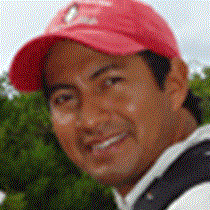Isabela Island: Urbina Bay & Punta Moreno
Volcanic islands: where Earth’s powers threaten and destroy already existing ecosystems, to give rise to new ones that throughout millennia might become hospitable enough to form cradles for new life forms.
Lava over here, lava over there and lava everywhere! Thus is the western side of Isabela Island. Today we visited Urbina Bay, at the foot of Alcedo Volcano, home to the largest population of giant tortoises in Galápagos.
A walk along Urbina Bay can be a quite an experience because this place did not exist back in the early fifties. As result of uplifting processes, caused by magma rising under the sea floor, the place came into existence giving us a dramatic view of the remains of marine life scattered along a vast area, where we can come across enormous coral skeletons that once were part of a beautiful and healthy ecosystem.
The wildlife here is amazingly abundant: as you walk you can find little creatures like hermit crabs climbing the bushes and fighting over shells to protect their bodies; swarms of Darwin’s finches, delighting us with their repertoires; giant tortoises and countless large yellow land iguanas courting females and digging burrows for the forthcoming breeding season.
It was a great outing on a very hot day, so as soon as we got to the beach we went for a long swim in the calm waters of the bay. During the second part of the day, we landed at Punta Moreno: a vast lava field at the foot of Sierra Negra Volcano that erupted in late October 2005. This lava field has a particular flavour because what you see at the beginning is just brown lava, quite uneven and sharp, but suddenly you find yourself in front of many little oases that can hold so much life! An sudden explosion of green calls attention to a pool home to fish, land birds, waders and the beautiful greater flamingos, feeding at an unhurried pace in the little lagoons surrounded by green vegetation.
Once back on board it was time to grab a cocktail, enjoy a gorgeous sunset and prove our recently acquired knowledge with a “Geo-bee” at cocktail time.
Volcanic islands: where Earth’s powers threaten and destroy already existing ecosystems, to give rise to new ones that throughout millennia might become hospitable enough to form cradles for new life forms.
Lava over here, lava over there and lava everywhere! Thus is the western side of Isabela Island. Today we visited Urbina Bay, at the foot of Alcedo Volcano, home to the largest population of giant tortoises in Galápagos.
A walk along Urbina Bay can be a quite an experience because this place did not exist back in the early fifties. As result of uplifting processes, caused by magma rising under the sea floor, the place came into existence giving us a dramatic view of the remains of marine life scattered along a vast area, where we can come across enormous coral skeletons that once were part of a beautiful and healthy ecosystem.
The wildlife here is amazingly abundant: as you walk you can find little creatures like hermit crabs climbing the bushes and fighting over shells to protect their bodies; swarms of Darwin’s finches, delighting us with their repertoires; giant tortoises and countless large yellow land iguanas courting females and digging burrows for the forthcoming breeding season.
It was a great outing on a very hot day, so as soon as we got to the beach we went for a long swim in the calm waters of the bay. During the second part of the day, we landed at Punta Moreno: a vast lava field at the foot of Sierra Negra Volcano that erupted in late October 2005. This lava field has a particular flavour because what you see at the beginning is just brown lava, quite uneven and sharp, but suddenly you find yourself in front of many little oases that can hold so much life! An sudden explosion of green calls attention to a pool home to fish, land birds, waders and the beautiful greater flamingos, feeding at an unhurried pace in the little lagoons surrounded by green vegetation.
Once back on board it was time to grab a cocktail, enjoy a gorgeous sunset and prove our recently acquired knowledge with a “Geo-bee” at cocktail time.




